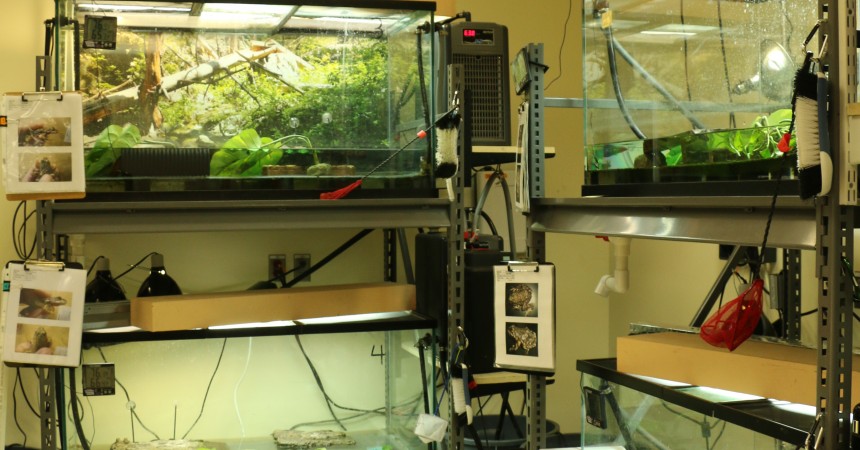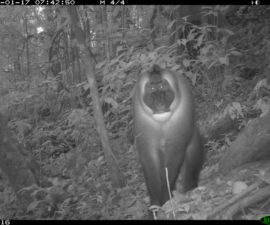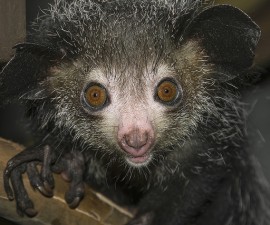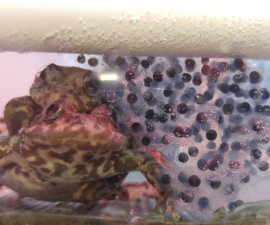Last winter, things were cold and quiet in the lab where we care for mountain yellow-legged frogs—just as they are every winter. Trying our best to replicate their natural environment, we keep the tank temperatures low—and the frogs hardly seem to move at all. Despite the calm, we excitedly monitor each female frog as the eggs that will be laid in the spring begin to develop. The breeding season is coming soon and this time of year prepares the frogs for a successful season.
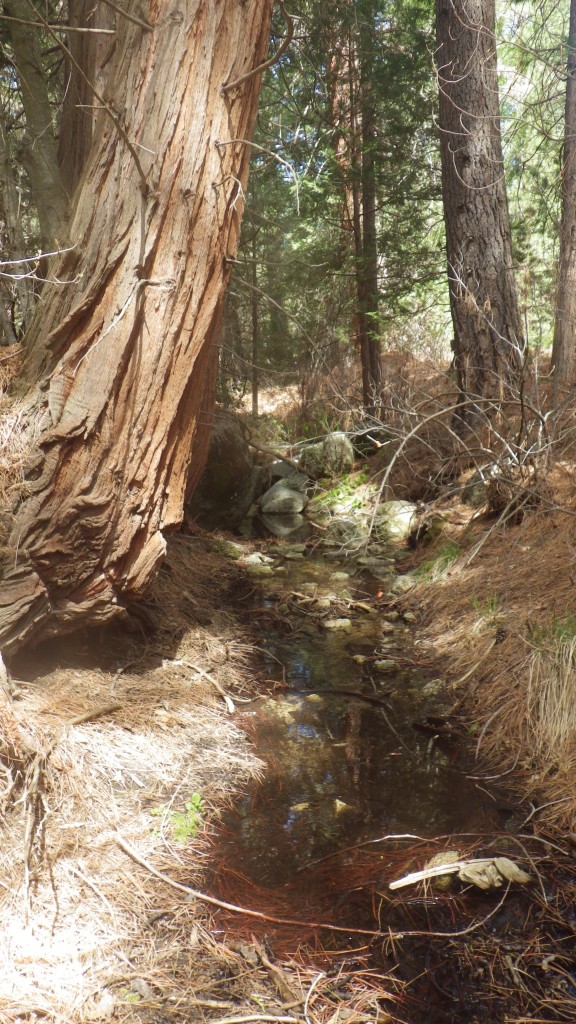
Mountain yellow-legged frog habitat.
Mountain yellow-legged frogs (MYLF) are found in small isolated pockets in the San Jacinto, San Bernardino, and San Gabriel mountains at elevations ranging from 1,200 to 7,500 feet. They live in creeks and ponds that remain filled with water year-round, and are rarely are found far from the water’s edge.
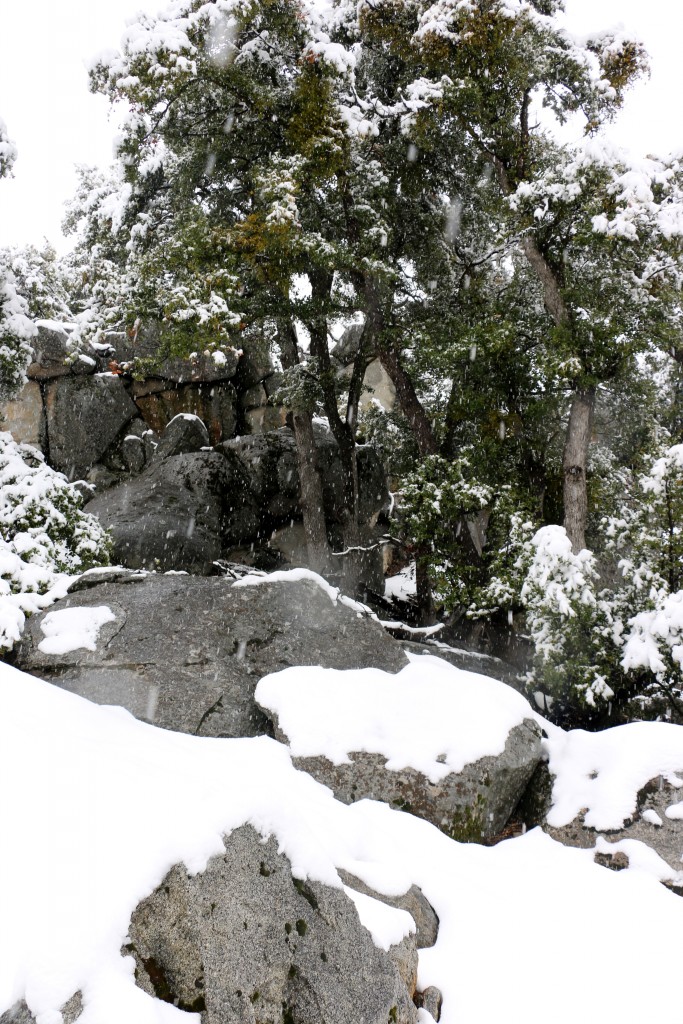
During the winter, the frogs tuck into rock crevices or the deepest part of a pool to hibernate.
In the winter months, temperatures drop to near and below freezing, and much of their native habitat becomes covered in snow. How do the frogs survive these freezing temperatures? Well, you might be surprised to learn they hibernate!
Mountain yellow-legged frogs go into hibernation when seasonal temperatures decrease starting in late fall. To escape the frigid weather, the frogs take shelter in underwater rock crevices and submerged vegetation located in deep pools, which are less likely to freeze over. Elevation plays a big role in what time of year this occurs, with frogs at higher elevations having longer hibernation periods than those at lower elevations. Once the frogs find a good spot, they can remain there throughout winter. During hibernation, the frogs’ heart rate and metabolism slow to point where the animals do not require food.
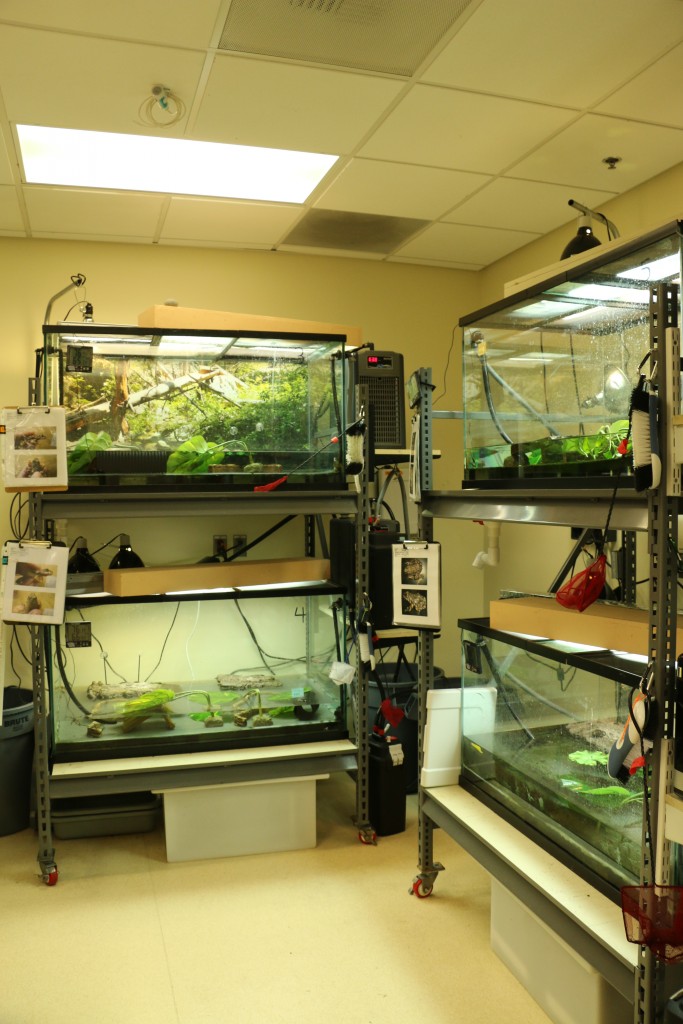
This is what the MYLF room looks like much of the year, but…
In the MYLF captive breeding lab, we strive to create conditions for our frogs that closely resemble what they would experience in the wild. During the winter, this means bringing the cold weather indoors! From late December to March, we lower the ambient temperature in the lab, turn off the basking lights, and crank the water chillers down to a nippy 40° Fahrenheit. It is essential that our frogs “chill out,” so we take extra precautions and cover the tanks with visual barriers made from black plastic. This provides them with some privacy and reduces their exposure to external stimuli.
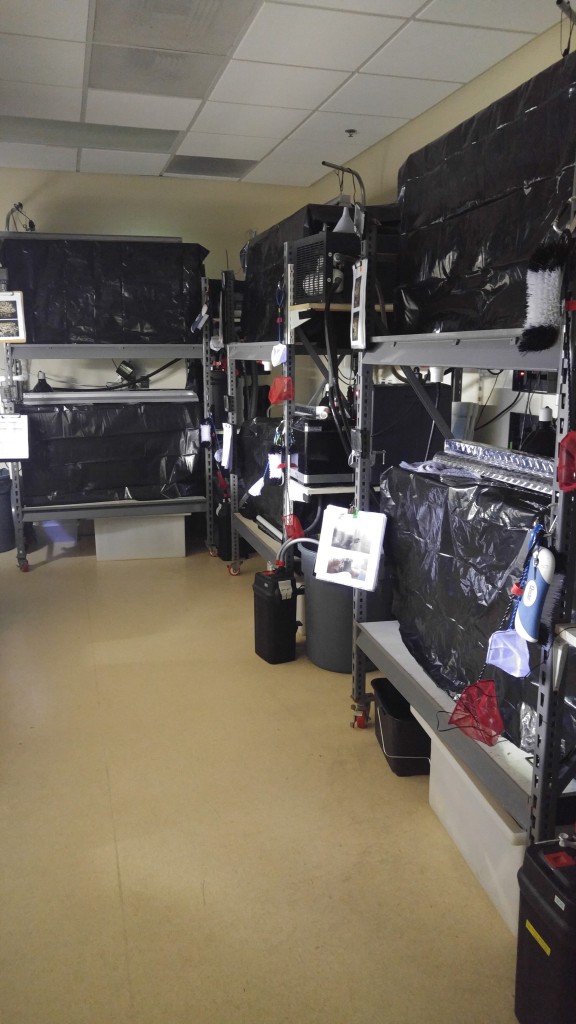
…we make special accommodations for the frogs during the winter.
In spring, the weather starts to warm and the snow begins to melt, which are signals to the frogs that it is time to “wake up.” Rest and relaxation are over and now it is back to frog business – finding a meal and a mate!
In Part 2, we’ll share why hibernation is important to frog reproduction, and how we are using science to help this species.
Michelle Curtis is a research associate at the San Diego Zoo Institute for Conservation Research.
Nicole Gardner, a senior research associate, and Natalie Calatayud, a post-doctoral research associate, also contributed to this blog.

